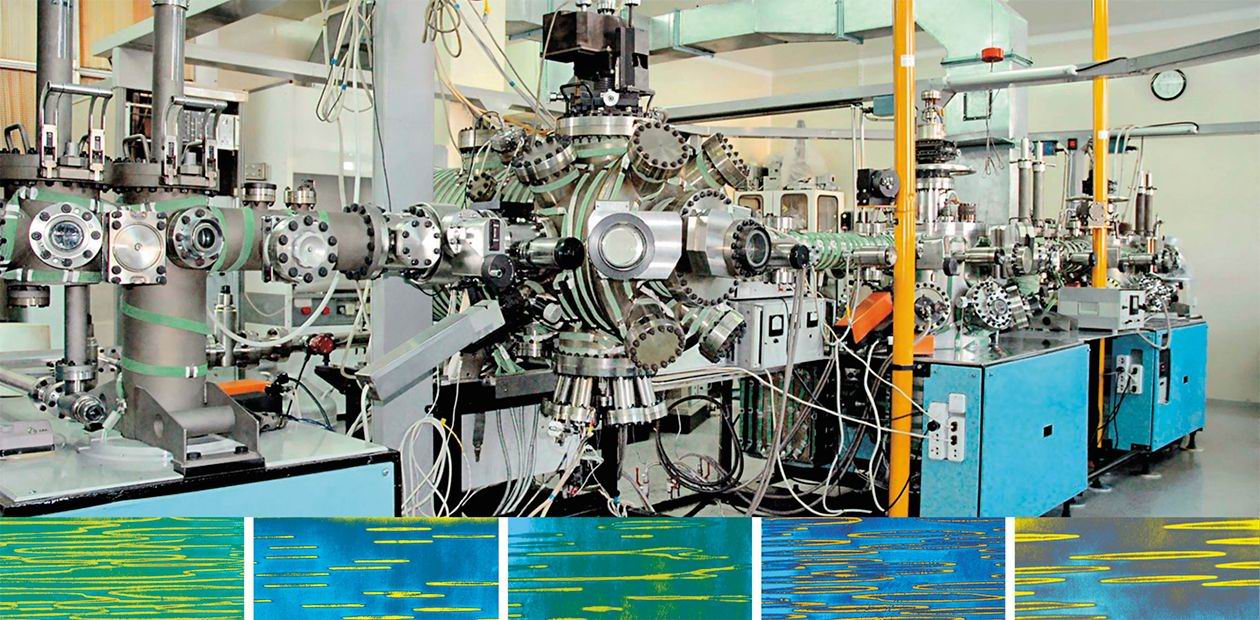Discoveries on the Surface of Semiconductors
A decade ago no one could assume that the word “nanoelectronics” will be commonly used not only by scientists but also by politicians of developed countries, including Russia
Anatoli V. Rzhanov was a member of the Academy of Sciences of the USSR and the first Director of the Institute of Semiconductor Physics of the Siberian Branch of the Russian Academy of Sciences, which was recently called after A. V. Rzhanov. In 1971, he wrote the monograph Electron Processes on the Surface of Semiconductors, which has become a classical book, describing the results of an approximately 40-years’ period of semiconductor-surface research. This research was inspired by the activities of academician I. E. Tamm, who theoretically demonstrated the possibility of existence of special states of electrons on the crystal surface. In the late 1940s, further experimental investigations allowed the discovery of the transistor effect, which is one of the greatest scientific achievements of the 20th century.
In the introduction to his book, Rzhanov, who may be undoubtedly called one of the founders of semiconductor-surface physics, formulated the basic problems in this field and indicated possible routes for solving these problems, which were followed by his pupils.
In his opinion, the main results in semiconductor physics could be obtained through increasing chemical purity and structural perfection of the crystal lattice of the original substances. Thus, the efforts of researchers in the 1970s-1980s were aimed at the development of the technology of growing perfect semiconductor single crystals.
1971
The classical A. V. Rzhanov’s monograph dealing with electron processes on the semiconductor surface was published
For instance, a technology of growing high-quality single crystals of silicon up to 125 mm in diameter was developed at the Institute of Semiconductor Physics of the Siberian Branch of the Russian Academy of Sciences. The method of crucibleless zonal melting used in this technology ensures the absence of dislocations and a low content of electrically active admixtures (in concentrations lower than 1012 cm-3 with a content of electrically inactive admixtures (oxygen and carbon, lower than 1016 cm-3). Today such single crystals are used for the production of elements of power electronics with extremely high parameters in terms of commutated power (hundreds of kW).
The results obtained at the Institute in solving problems not only of chemical purity and perfection of the semiconductor surface but also of semiconductor-dielectric and semiconductor-semiconductor interfaces are equally important. Significant factors here were the development and application of a new generation of methods and tools for studying the electron properties and atomic structure of the surface with fantastic possibilities in terms of space and energy resolution.
An important step in optimization of the technology of obtaining perfect interfaces was the development of laser ellipsometry. This method based on measurement of the angles of polarization of reflected light was brought at the Institute to a high level of perfection in terms of the following factors: sensitivity (fractions of a monolayer), response time (microseconds), and level of automation. The use of this method and improvement of measurements of volt-faraday characteristics of metal-dielectric-semiconductor structures made it possible to develop a technology, which allows the InAs-dielectric interface with an extremely low density of surface states (lower than 1010 cm-2 eV-1) to be obtained.
Based on these structures, photosensitive elements were developed for matrix photodetectors of the medium IR range (2.5—3.0 mm) used in medical-purpose IR imagers and later for IR microscopes and fast-response IR spectrometers.
The use of surface-sensitive methods of electron spectroscopy made it possible to obtain impressive results in studying the elementary mechanisms of photogeneration of electrons by semiconductor systems with a negative electron affinity. These methods provided the basis for the technologies developed at the Institute of Semiconductor Physics for obtaining semiconductor electron-optical converters of new generation, which are used in advanced night-vision equipment.
The most powerful impetus on the development of physics of the semiconductor surface was given by high-speed progress in the technology of molecular beam epitaxy (MBE). This technology is based on consecutive growing of individual atomic layers of crystalline materials from molecular beams incident onto the surface of a semiconductor substrate; the composition and structure of the growing layers are analyzed in real time with the use of diffraction of fast electrons and laser ellipsometry. Additional details are found and the mechanism of the formation of individual atomic layers on an atomically pure semiconductor surface is exactly determined by using complicated and highly sensitive methods, such as diffraction of slow electrons, reflection electron microscopy, scanning tunneling microscopy, and atomic-force microscopy.
Combined application of all these approaches made it possible to use the MBE method for obtaining complicated thin-film structures consisting of tens and hundreds of individual layers of atomic and nanometer-scale thickness. This technology was used at the Institute for creating multilayer epitaxial structures with quantum wells, which are used in a number of devices of modern electronics in super-high-frequency transistors, photodetectors, miniature semiconductor lasers with a vertical resonator, etc.
A new stage in the development of semiconductor surface physics and its applications in modern micro- and nanoelectronics began in the 1990s. Quantum effects were discovered in the semiconductor systems of reduced dimension: quantum wells, quantum filaments, and quantum points, as well as in nanostructures with complicated geometry, including annular electron interferometers and nanoshells of an arbitrary shape.
Based on epitaxial structures with quantum points of germanium and indium arsenide, prototypes of photodetectors in the IR range, single-electron transistors, and single-photon emitters were created. The results of studying and modeling the processes of transfer of charge carriers in multilayer silicon-oxide structures containing quantum points offer a possibility of improvement of the basic parameters of elements of electrically programmable constants of memory devices of new generation and also of passing to terabit-scale memory volumes.
Recent priorities include the development of the method of molecular self-assembling of stressed thin-film structures grown by the MBE method, which was developed at the Institute. The method of obtaining semiconductor nanotubes offers prospects for the production of individual nanostructures of complicated shapes and their arrays with extremely high accuracy (up to a value equal to the thickness of one monolayer!).
The following objects have already been produced using this technology: nanotubes of semiconductor materials designed for studying the properties of a two-dimensional electron gas on cylindrical surfaces; micrometer-diameter tubes designed for hot-wire microanemometers and for the use in cell biology and medicine as micro- and nanosyringes.
Further development of this kind of technologies will be accompanied by expansion of the area of application of nanoobjects in electronics, biology, medicine, and other fields of vital importance. Much glory should be given to the Siberian researcher A. V. Rzhanov.
Academician A. L. Aseev
(Rzhanov Institute of Semiconductor Physics, Siberian Branch,
Russian Academy of Sciences,
Novosibirsk Scientific Center)







